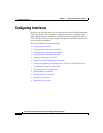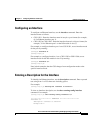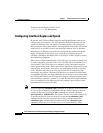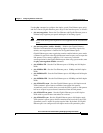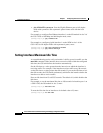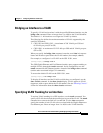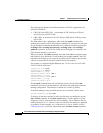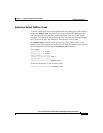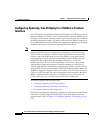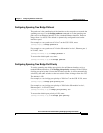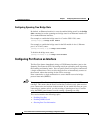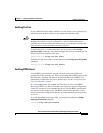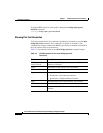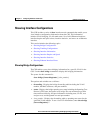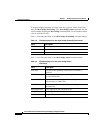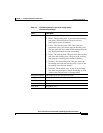
Chapter1 Configuring Interfaces and Circuits
Configuring Interfaces
1-14
Cisco Content Services Switch Routing and Bridging Configuration Guide
OL-4580-01
Configuring Spanning-Tree Bridging for a VLAN or a Trunked
Interface
The CSS supports configuration of Spanning-Tree Protocol (STP) bridging for an
Ethernet interface in a VLAN or for a trunked Ethernet interface. Spanning-tree
bridging is used to detect, and then prevent, loops in the network. You can define
the bridge spanning-tree path cost, priority, and state for an Ethernet interface or
for a trunked Ethernet interface. Ensure you configure the spanning-tree bridging
parameters the same on all switches running STP in the network.
Note When connecting a Cisco Catalyst switch to a CSS using an 802.1Q trunk and the
Spanning-Tree Protocol, the Catalyst runs a spanning-tree instance for each
VLAN. When you configure an 802.1Q trunk on an Ethernet interface for the
Catalyst switch, the bridge protocol data units (BPDUs) are tagged with the
corresponding VLAN ID and the destination MAC address changes from the
standard 01-80-C2-00-00-00 to the proprietary 01-00-0c-cc-cc-cd. This
modification allows Cisco switches operating in a non-Cisco (a mix of other
vendors) 802.1Q trunk environment to maintain spanning-tree states for all
VLANs. Although the CSS maintains a spanning-tree instance for each VLAN as
well, the CSS uses the standard 01-80-C2-00-00-00 destination MAC address for
all BPDUs (tagged or untagged). When you connect a Cisco Catalyst switch to a
CSS over an 802.1Q trunk, the result is that neither switch recognizes the other's
BPDUs, and both assume root status. If a spanning-tree loop is detected, the
Catalyst switch goes in to blocking mode on one of its looped ports.
This section includes the following topics:
• Configuring Spanning-Tree Bridge Pathcost
• Configuring Spanning-Tree Bridge Port Priority
• Configuring Spanning-Tree Bridge State
For details about globally configuring spanning-tree bridging parameters for the
CSS (such as bridge aging time, forward delay time, hello time interval, and
maximum age), refer to Chapter 2, Configuring Spanning-Tree Bridging for the
CSS.



